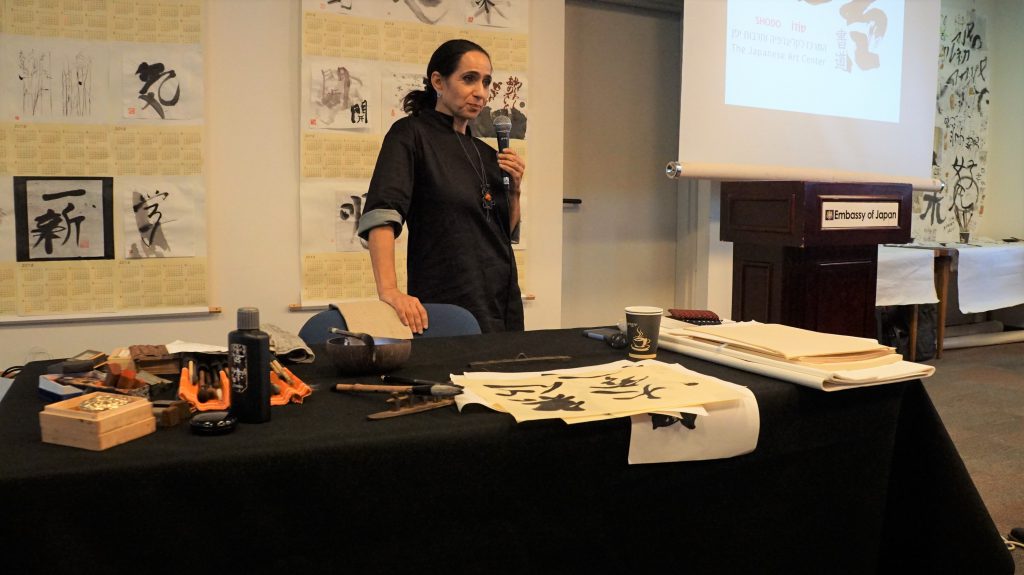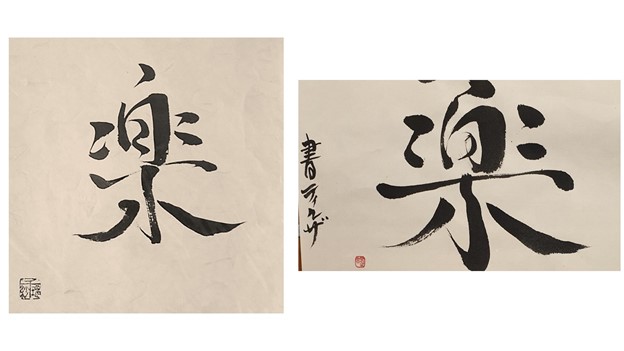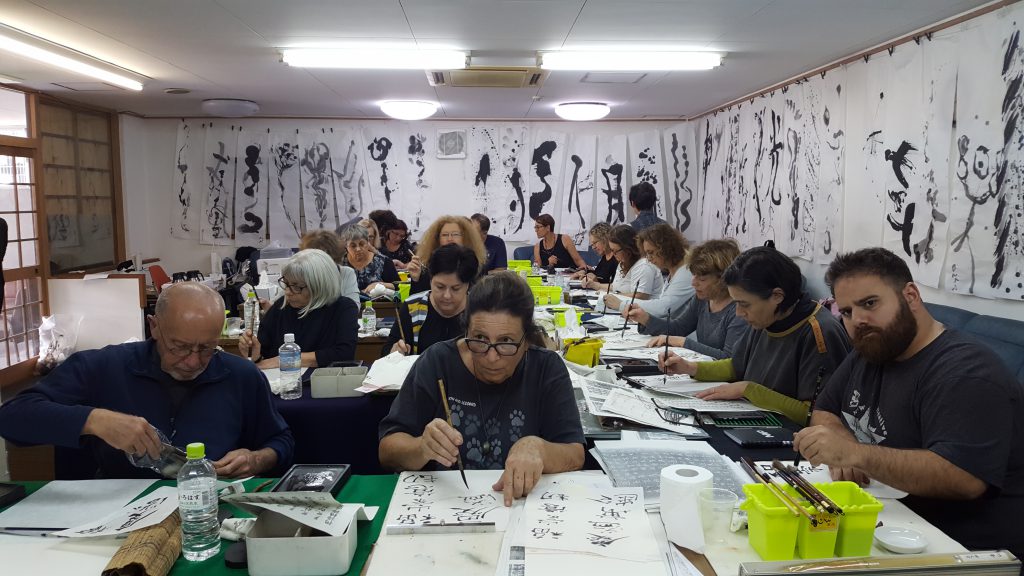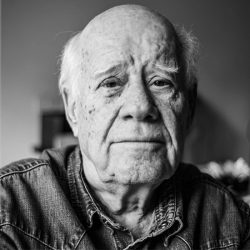
The art of “Shodo” also known as Japanese calligraphy, has been passed down for many generations and is a central part of Japanese culture. Although commonly practiced by the people of Japan, the art has ventured beyond national boundaries, becoming appreciated and understood by people overseas.
Tirza Paytan Sela found the art of Shodo during her trip to Japan 30 years ago. Now, Tirza is an accomplished Shodo artist who has displayed her calligraphy in exhibitions around the world. ISRAERU was able to speak with Tirza on her journey into the ancient art, her experience as a calligrapher and calligraphy teacher, and the deeper meaning of Shodo.
From Israeli Art Student to Shodo Teacher

In 1987 Tirza had no prior knowledge of Japanese calligraphy. Shodo was not as accessible 30 years ago as it is today, especially to the Western world of Israel that Tirza was raised in.
“No one in my art university taught Shodo, people did not know anything about the art.”
Tirza initially traveled to Japan because of her love of the culture and minimalist aesthetic. While studying the various art forms in Japan, she was introduced to the ancient medium of Shodo, which immediately stood out from the rest.
“I sensed it in my belly. Shodo is a living thing. Calligraphy flows like water, like life. It is always here and now. Since no corrections nor repetitions are allowed it is a reflection of your inner self, a frozen picture of the heart. The minute you start it is completed, always fresh, authentic, and a true beginner's mind.”
Tirza understood that Shodo was more than just a skill. Learning the art also required learning about the language, culture, and history of Japan.
“For me, calligraphy is a way of life. It’s not only an art medium but rather a lifestyle that I apply to everything that I do.”
She continued.
“So many of the teachings in Shodo are applicable to our lives today. The world hasn’t changed all that much since the kanji characters were made. The sun still rises and sets, the seasons change, and nature still exists.”
The teachings of Shodo are given in the characters themselves. An example Tirza provided was the character for “Tanoshii,” translated to pleasant.

“In this kanji, you can see the character for the sun in the center, with the character for tree underneath. Next to the tree are spots, which I call the fruits of the tree. This begs the question of why the ancient people of Asia saw happiness as the sun with a tree bearing fruits.”
“There are so many different ways to interpret this. One example is that we should be like a tree: well-rooted to our source, generous, kind, and giving. Trees also connect to the sun. From being in sunlight, you will feel comfort and ease.”
With knowledge and teaching like this, Tirza treated Shodo as a lifestyle. Now after 30 years of dedication to the craft, she is not only an accomplished calligrapher, but also a teacher.
The Teachings and Values of Shodo
As an Israeli who fell in love with a Japanese art form, Tirza is now using her knowledge to promote the ancient art of Japanese calligraphy to more people of different cultures. Through teaching her students, Tirza wants as many people to know that Shodo can be taught to anyone, and is more about knowledge and the lifestyle than it is about artistic skill.

“I get asked all the time, ‘Shodo is an art involving the Japanese language. How can foreigners connect with the medium?’ My answer to this is that I apply the teachings of Shodo to my life as an Israeli. Calligraphy teaches us as people the importance of simplicity and learning from the past. My goal is for my students to combine the art with their own source of creativity.”
As a teacher, Tirza also emphasizes the importance of reconnecting to one’s lost creativity.
“Everyone is born creative. Creating was so easy for everyone as kids, and only became difficult when teachers and adults around us gave us rules to fit into. As we were transitioning into adults, we suppressed the natural flow of creativity in our minds and lost the ability to think outside of the box.”
Tirza does not expect to make all of her students Shodo masters, using Shodo as a medium to expose her students to a new lifestyle and connect with their creativity.

“I would like to clarify the misconception that you need to know Japanese or be an expert to start Shodo. Just like Yoga, Tai Chi, and Meditation, Shodo is a practice that promotes mindfulness. Anyone can do it. We are not here for the results, we are here for the journey.”






